We use cookies to help better serve your experience. Accept Cookies
Notes
Crucial Elements of the Pro-Palestinian Campus Protests Overlooked by the Mainstream
Keenly focused on education, negotiation, militarism, and human rights, the encampments have stood for much more than they have been credited for.
By Michael Shaw
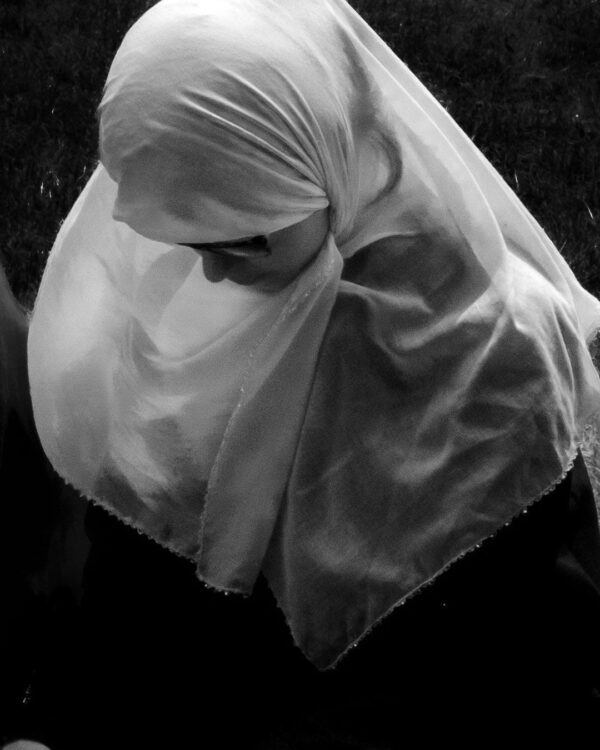
A person kneels during prayers at the University of Texas on April 26, 2024, one day after police led a violent stampede through the campus, beating student and non-student protestors and arresting more than fifty people. Photo by Joseph Rushmore via @no_jackson on Instagram
Amid the pro-Palestinian campus protests and counter-protests, major media has prioritized images of tension, anger, and confrontation. However, a broader look at the Instagram photos from photographers associated with the Columbia Journalism School and professional photojournalists nationwide reveals a narrative rich in subtlety, irony, and context that has been largely overlooked.
Here, I explore images that capture the essence of the protests, hoping to reclaim the lost “teaching moment.”
The Imperative of Education
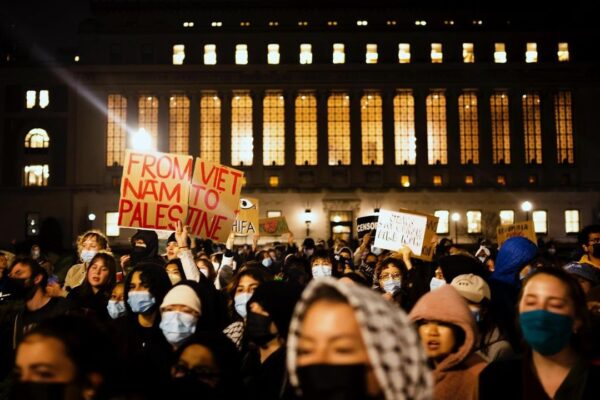
Columbia and Barnard students at their encampment on April 17, 2024, calling for University divestment from companies that do business with Israel. Photo by Nina Berman via @ninaberman on Instagram
Nina Berman’s photograph at Columbia University’s pro-Palestine encampment highlights an anti-war poster, placing the protest within a historical context that parallels past student movements. This image not only legitimizes the latest action as a Columbia tradition but equates the protests over America’s role concerning Israel and Palestine with students just saying no to apartheid in South Africa and U.S. involvement in Vietnam.
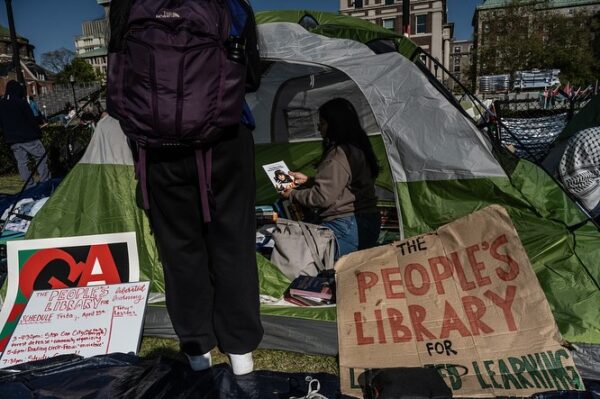
Pro-Palestinian encampments at New York University. Photo by Stephanie Keith/Getty Images via @steffikeith on Instagram
Stephanie Keith’s image from the New York University encampment embodies the spirit of education, reminiscent of the “teach-ins” of the 1960s. These scenes highlight the consciousness-raising side of activism, the importance of learning and negotiation seemingly lost on many colleges and universities.
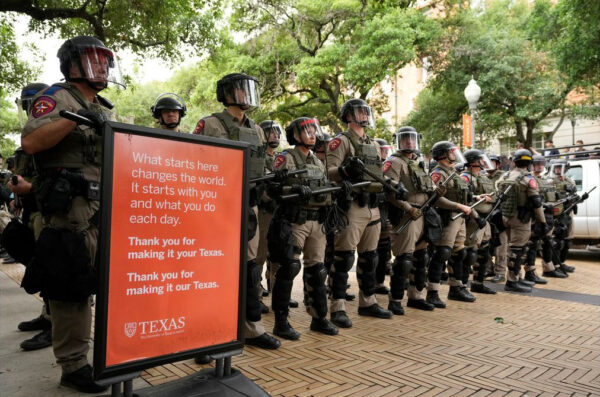
State troopers in riot gear try to break up a pro-Palestinian protest at the University of Texas on April 24, 2024. More than 50 people were arrested at the rally, which was hosted by the Palestine Solidarity Committee, a registered student group, and a chapter of the national Students for Justice in Palestine, which held the rally to call for an end to the Israel-Hamas war. Photo by Jay Janner via @jayjanner on Instagram
Jay Janner’s photograph of state troopers in riot gear at a University of Texas-Austin protest underscores the disparity between the ideals of higher education and the harsh reality of institutional power. As if a bait-and-switch, the lofty aspirations of the sign encouraging students to “change the world” are reduced to lip service.
Jewish Support
The media has largely glossed over the diversity of the pro-Palestinian protests, especially the significant participation of American Jews through groups such as Jewish Voice for Peace. The tendency to assume American Jews overwhelmingly support the actions of the Israeli government disregards the diversity of views within the community, especially among the young. Around 20-25% of American Jews could be considered anti-Zionist or non-Zionist, while nearly half of Jews aged 18-29 express less emotional attachment to Israel or support for Israel as essential to being Jewish.
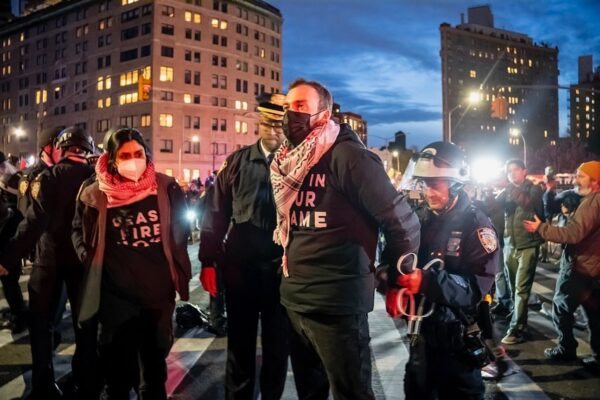
Protesters for Jewish Voice For Peace at Brooklyn’s Grand Army Plaza on April 23, 2024. Photo by Mark Peterson/Redux via @markpetersonpix on Instagram
Sporting phrases like “Not in our Name,” the Jewish protesters in Grand Army Plaza in Mark Peterson’s photograph were arrested in Brooklyn within days of the 15 Jewish Columbia students arrested, suspended, and evicted after the NYPD tried to break up the encampment. More intimately and spiritually, Jewish students shared traditional prayers and meals on Passover with fellow protesters in encampments all over the country.
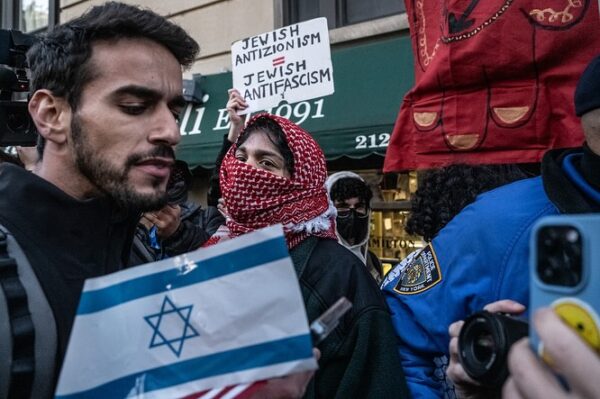
Pro-Israel marchers protest the presence of pro-Palestine encampments at the back gates of Columbia University in New York City on April 25, 2024. Photo by Stephanie Keith/Getty Images via @steffikeith on Instagram
Stephanie Keith’s marvelous image captures an anti-Zionist protest sign floating above flag-waving pro-Israel demonstrators at the gates of Columbia University. The juxtaposition challenges the narrative that opposition to Israel’s actions in Gaza equates with anti-Semitism, the sign presenting a counter-narrative equating Zionism to fascism. While Zionist counter-protesters assume to have it both ways—the Israeli flag representing the state and the faith, the sign casts the flag more strictly as a nationalist symbol.
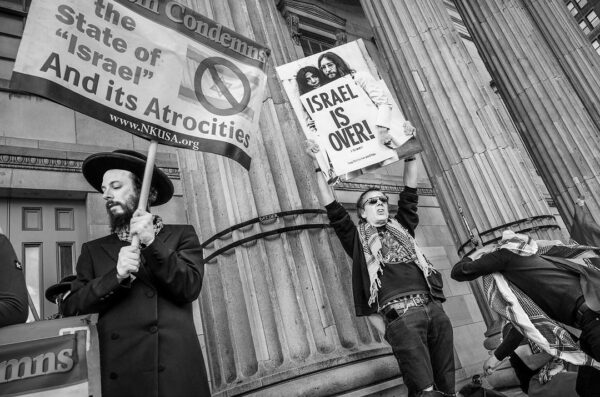
Protesters demand a ceasefire in Gaza and an end to investment in arms manufacturers supplying Israel at the Brooklyn Borough Hall on April 15, 2024. Photo by Graham MacIndoe via @grahammacindoe on Instagram
Graham MacIndoe’s photo of protesters demanding a ceasefire also challenges assumptions about unanimity within the Jewish community. On the left, we see a member of Neturei Karta, an Orthodox sect that opposes Zionism, the occupation of Palestine, and even the existence of the State of Israel.
Can We Talk?
In light of the famous: “If it bleeds, it leads,” I was pleased to come across these images.
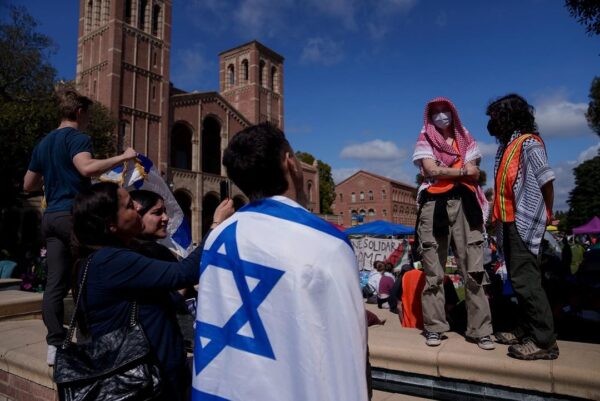
Pro Palestine Encampment at UCLA in Los Angeles, CA. Photo by Eric Thayer/Getty Images via @ericthayer on Instagram
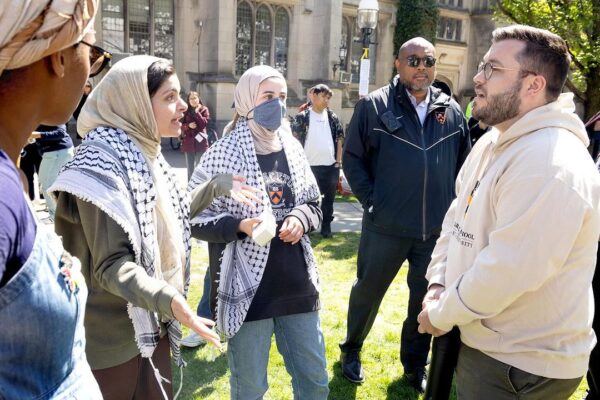
A group of Princeton students during a sit-in protest on April 25, 2024. Photo by Aristide Economopoulos via @aeconomopoulos on Instagram
Amidst the escalating tensions, Eric Thayer’s image from the UCLA encampment and Aristide Economopoulos’ photograph of Princeton students underscore the students’ desire to do what students do and embrace the moment as an opportunity for dialogue.
Sadly, as much as the protests emphasize policy change, I’ve seen almost no photo documentation of students sitting down with university officials or negotiators (and little coverage of constructive progress at schools like the University of Vermont and Brown). In the current atmosphere, it seems that just recognizing grievances and opposing views is perceived as threatening.
Identity and Empowerment
The protests have been about so much more than they have been credited with. Driven by youth, they have served as a platform for human rights and cultural exchange and a spotlight on militarism, prejudice, and the warping power of political, corporate, and individual special interests.
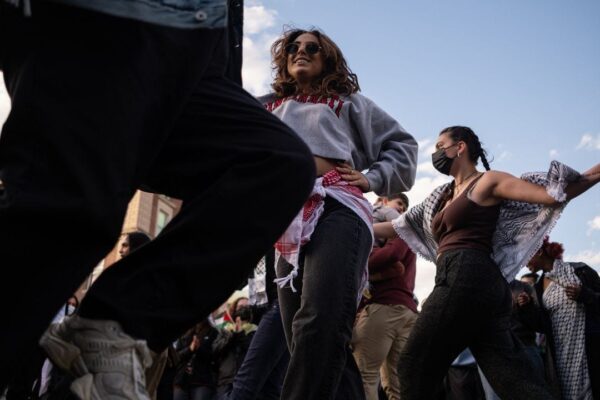
Students danced in the Gaza Solidarity Encampment at Columbia University on April 1, 2024, the fourth day of the pro-Palestine occupation. Photo by @marcopstorel @columbiajournalism
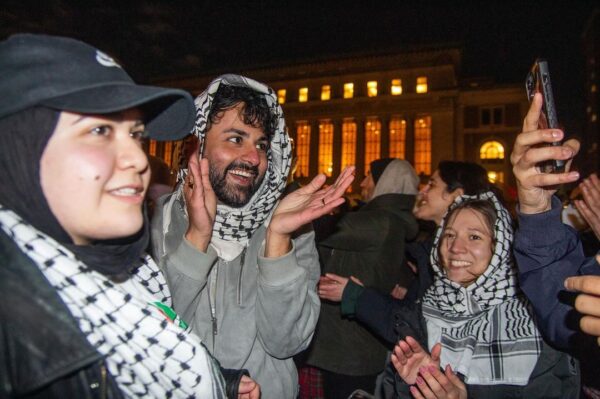
On Wednesday, April 17, at around 4 am, pro-Palestinian students gathered at the South Lawn of Columbia University and set up a “Gaza Solidarity Encampment.” Students were chanting pro-Palestine slogans till late at night. Photo by @judetaha @columbiajournalism
We should also remember that the protests are an assertion of equality and identity for Muslims and Muslim Americans. Images from student photojournalists, such as Marco Storel and @judetaha from the Gaza Solidarity Encampment at Columbia University, or the photo leading this newsletter by Joseph Rushmore of a University of Texas student kneeling in prayer, highlight community, culture, ritual, and pride.
Core Ideals
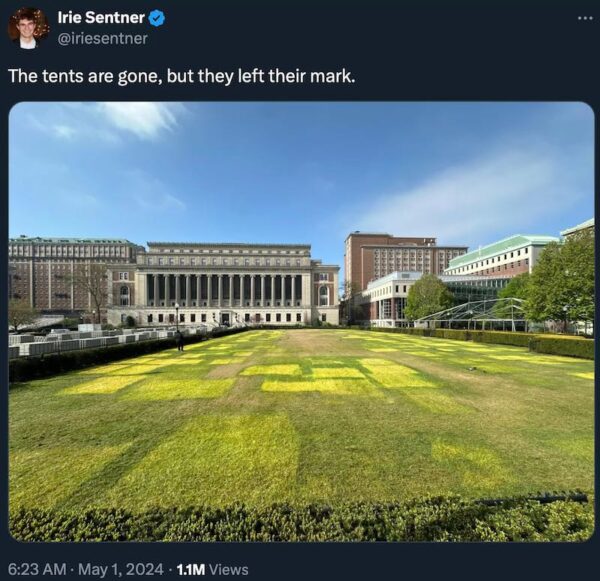
This is an eloquent statement and image from Irie Sentner, former Editor-in-Chief of the Columbia Spectator, after the camp was cleared.
As the media focuses on scenes of violence, forced removal of students from campus grounds, and the rising political blowback, it is vital to keep in focus the moral, social, and profoundly educative ideals of the encampments and the profound impact they have had.
Follow us on Instagram (@readingthepictures) and Twitter (@readingthepix), and subscribe to our newsletter.
Topic
A curated collection of pieces related to our most-popular subject matter.
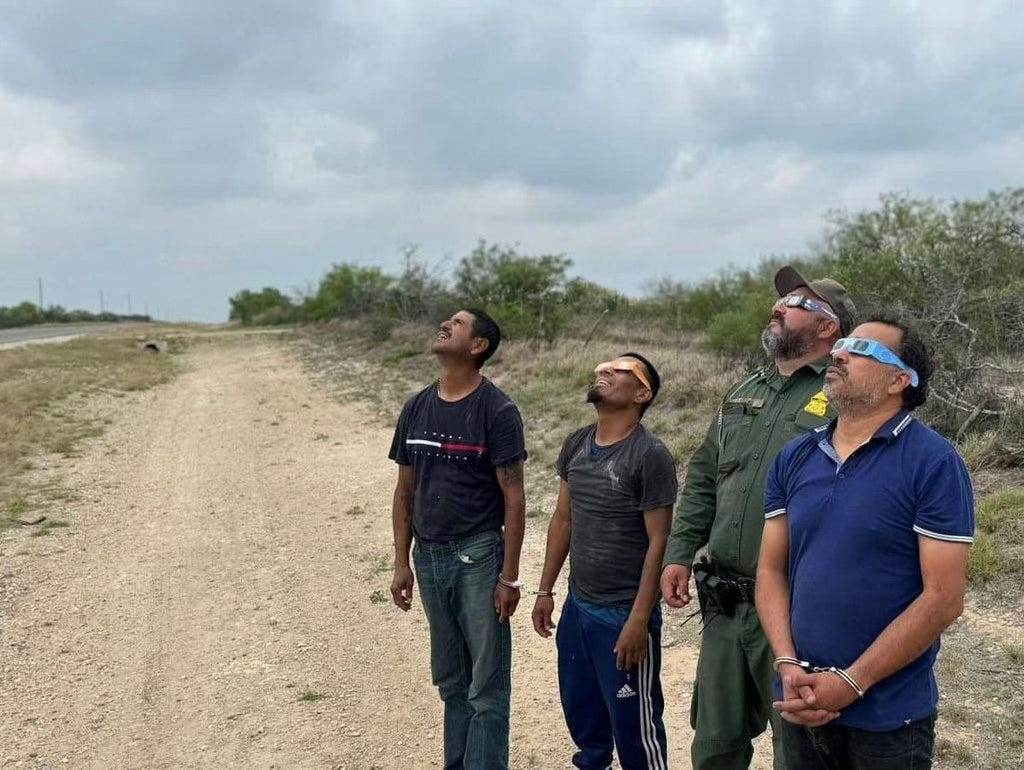
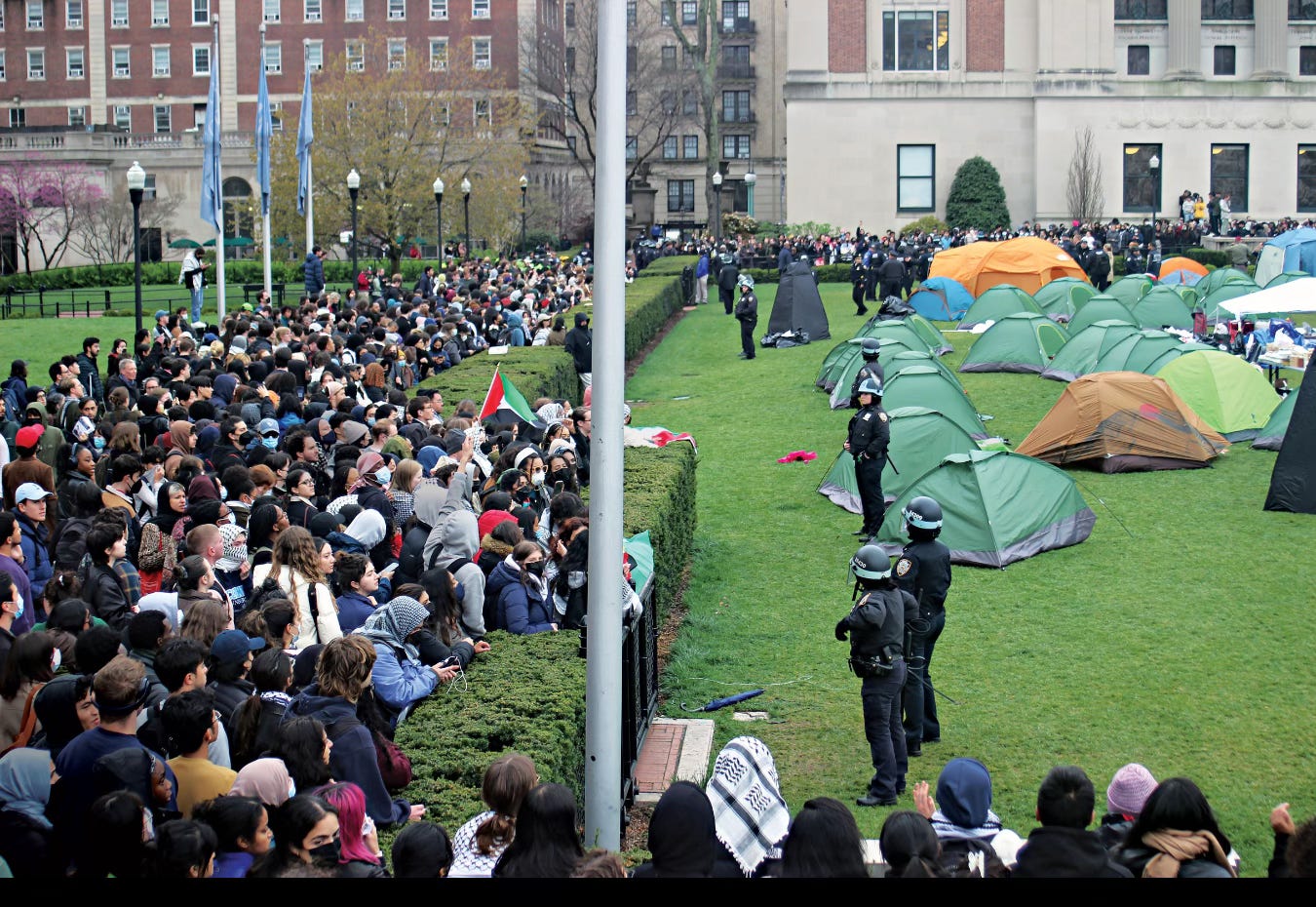
Reactions
Comments Powered by Disqus